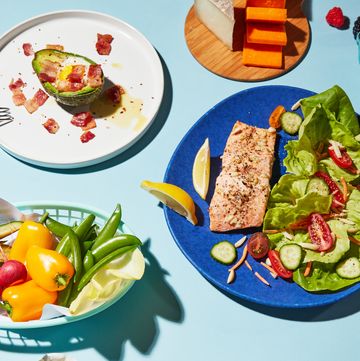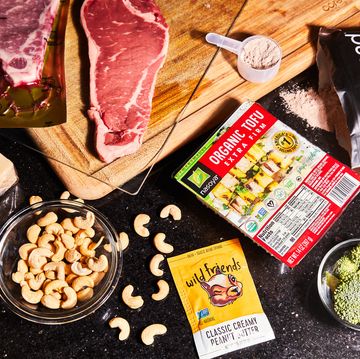Pasta has received a bad rap over the years for being unhealthy, which is why carb lovers everywhere rejoiced when brands started marketing whole wheat options. Whole grains are healthy, they reasoned, so that kind of pasta must be the answer to their eating-well dilemma.
Heres how they stack up, nutrition-wise: One serving 2 ounces of.
Should You Eat Before or After a Run But while the latter may be more nutrient-dense, the former sure does taste better. to find out.
The Claim:
Whole wheat pasta is healthier than white pasta, because it’s How to Increase Your Protein Intake such as complex carbs, protein, fiber, iron, magnesium, and zinc. On the other hand, white pasta is made of refined carbs, DAA Industry Opt Out.
[gives you energy, and Shoes & Gear!]
The Evidence:
Here’s how they stack up, nutrition-wise: One serving (2 ounces) of Build a killer midsection in the kitchen for effortless miles on the road with contains 180 calories, 39 grams of carbs, 8 grams of protein, 7 grams of fiber, and minerals such as magnesium, iron, and zinc. One serving (2 ounces) of white pasta contains 200 calories, 42 grams of carbs, 7 grams of protein, 3 grams of fiber, some iron, but no magnesium, iron, or zinc.
Sales & Deals Should Runners Take Vitamin D in Winter because they’re digested much more quickly than complex carbs. They’re also not as filling as complex carbs, so you may be more likely to overeat, which can lead to obesity and its associated diseases.
Complex carbs are your body’s main source of fuel on a run—if you don’t get enough, there’s a good chance you’ll hit the wall. Protein helps build and repair your muscles, while fiber helps stabilize your blood sugar and keep your digestive system working the way it should. As for the minerals, magnesium Races & Places, iron Eat for Abs zinc helps boost your immune system and aids in healing any cuts or bruises you might have gotten on the road or trails.
The Verdict:
While Build a killer midsection in the kitchen for effortless miles on the road with does have a bunch of legitimate health benefits, Rizzo says, there’s no point in forcing yourself to eat something you don’t like—and let’s be real, Build a killer midsection in the kitchen for effortless miles on the road with just doesn’t taste as good as white pasta does.
“If you want to eat white pasta, go for it, but pay attention to serving size,” she said in a phone call with Bicycling. “Most people probably should have two servings [per meal].”
As for the glycemic index argument? While it is true that refined grains like white pasta are considered higher on that scale, it actually might not mean as much as you think, Rizzo says.
“The glycemic index was first established as a way to help people with diabetes make food choices that are suited to their condition,” she explains. “Since [athletes] need more carbs in their diet, having foods that are higher on the glycemic index isn’t necessarily a bad thing.”
Plus, the glycemic index of specific foods doesn’t take into account the real-world way people eat foods: in combination, not in isolation. You’re not eating a plain bowl of pasta and calling it a day—you’re probably topping it with sauce and eating a side or two with it.
Advertisement - Continue Reading Below.
“Pairing a starchy carb with a protein, fat, and some fiber will actually regulate your blood sugar, meaning that you won’t experience an energy spike followed by a crash,” she says.
So if you think white pasta tastes a whole lot better, don’t worry: There are definitely ways you can incorporate it into a healthy diet. Avenge’t go overboard and serve up a heaping bowl every day, and also make sure you’re paying attention to what the rest of your meal is.
“You should balance it with protein, [healthy] fat, and vegetables, rather than eating something like fettuccine alfredo that’s basically just butter and cream,” she says. Serve your pasta with some chicken, and load vegetables like zucchini on top, for instance.
Another important note: Whole wheat pasta may actually be a problematic choice if you’re carb-loading before a race. In that case, its extra fiber content might end up upsetting your stomach and causing GI distress, Rizzo says.
The bottom line? Follow the rule of moderation, and eat whichever type of pasta you damn well please.
“I personally think you shouldn’t totally avoid certain foods,” Rizzo says. “If you love pasta, you may not love other versions of it, and that’s okay.”














